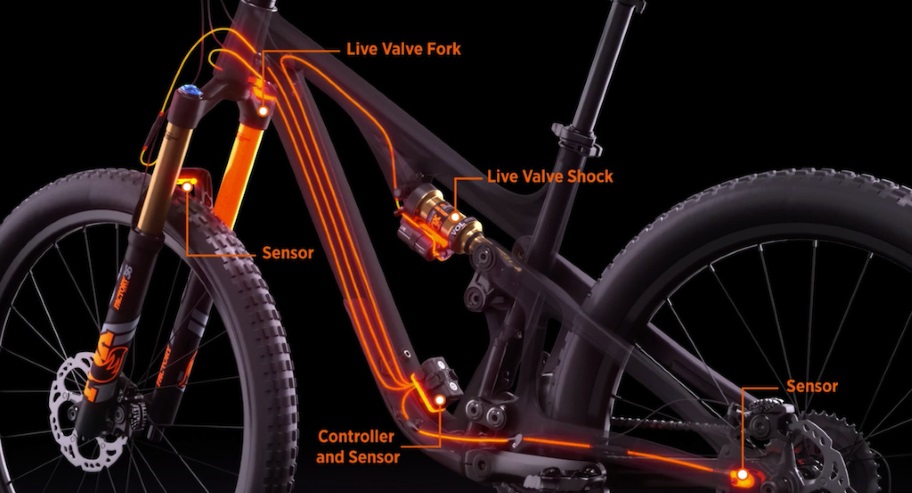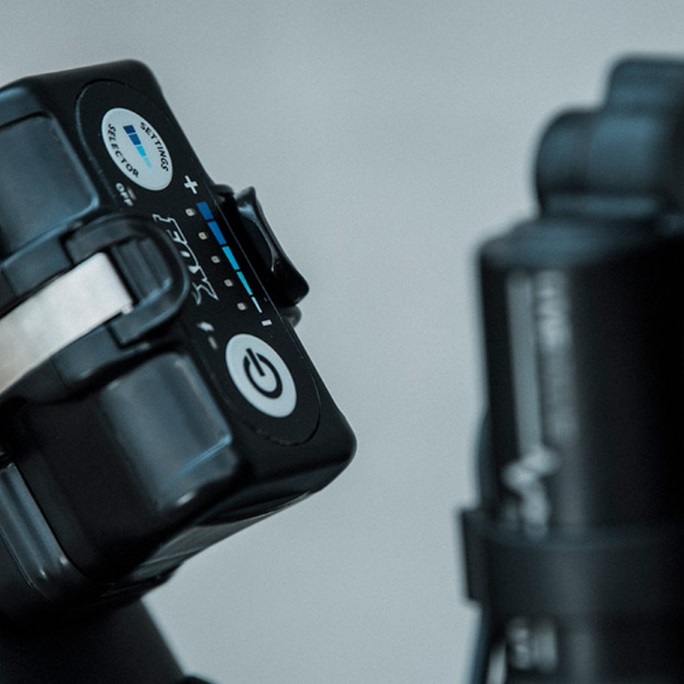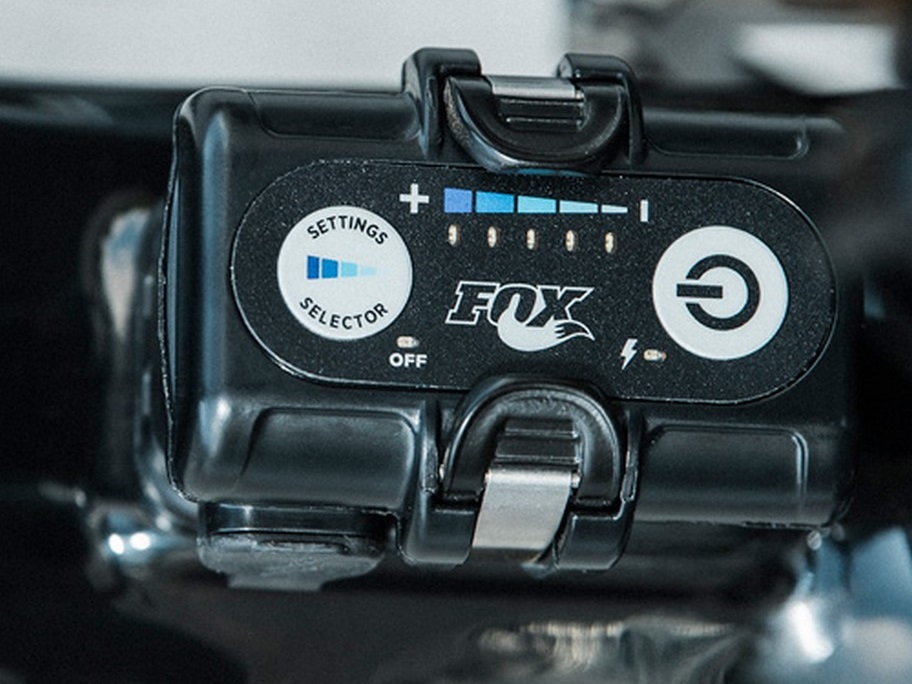
The System Is Complex, But What You Get Is Simple. It’s Doing The Work For You.
Designed from the ground up by their Advanced Products Group, Live Valve essentially changes the way we interact with suspension.
Introducing Live Valve, their most advanced electronically controlled suspension system for mountain bikes. Featuring ultra-fast reacting sensors and the fastest valve ever created by FOX, Live Valve automatically adjusts the fork and shock independently as the terrain changes.
What is Live Valve?
It’s a battery operated controller which is essentially a microcomputer with a pitch detection sensor that connects to accelerometer sensors located on the fork crown and rear triangle that detect motion/movement of the fork and rear axle and then it magnetically activates the low-speed compression damping valve on the fork and rear shock to open or close depending on the requirements. Each of the detected pitches, climb, level, descend and freefall will have the valve open or close on the fork and shock (dependently or independently) utilizing a combination of the controller’s software algorithm, the pitch, and the accelerometers bump impactions.
Cost?
Currently, the system is only being offered on a few bikes with an approximate upgrade cost of $2000 over the normal price of the upscale model: the Pivot Mach 5.5, Scott Spark, Giant Reign Advanced 27.5 and Rocky Mountain Altitude Carbon, but a few other bike companies will be offering the Live Valve soon. Aftermarket kits will be offered soon, but expect the pricing to be significant compared to OEM’s pricing structure.
Controller
The brains behind the system are the suspension Controller, monitoring the terrain at a rate of a thousand times per second and making suspension adjustments in just three milliseconds – that’s one hundred times faster than the blink of an eye.
With strategically placed sensors on the frame and both wheels, the Controller processes data from the terrain to constantly adjust the suspension for maximum efficiency and control no matter what the trail throws at you.
Battery
Mounted on the Controller, the specially designed lithium-ion battery is the main user interface and can be charged (micro USB) on or off the bike. The setting selector button allows you to choose five different threshold settings. Battery life can vary depending on Live Valve settings and terrain. Average life ranges between 16 and 20 hours. For most riders, that will cover a few weeks of riding. Charge times range between 1.5 and 2 hours depending on the power source. If you forget to charge the system before a ride, it only takes 15 minutes to get enough power for a 2-hour ride.
Calibration
To ensure the sensors are functioning properly, the Live Valve system should be calibrated during final bike assembly, but it can be done at any time. The system only needs to be calibrated once unless replacing any sensors or controller, or changing the fork travel.
Accelerometer sensors on the fork, rear axle, and mainframe read bump input at the wheel and the pitch angle of the bike, sending information to the suspension Controller at a rate of 1,000 times per second.
Equipped with pitch detection, the system can recognize when you’re climbing, traversing or descending, and tailor the suspension settings to maximize your bike’s performance.
Set Up
With the Live Valve system turned off, you set sag and rebound damping like you would on a standard fork and shock. Low-speed compression damping can be tuned for the open mode via a 3mm hex on the fork and shock.
Live Valve takes setup a step further, allowing you to customize the on-trail feel with adjustable Bump Threshold. Bump threshold sensitivity is adjustable at the Controller with five different settings varying from a very sensitive setting (very little bump force to open the Live Valve) to a very XC race tune (where a larger hit is needed to open the suspension).
Once you’ve selected your threshold setting, the Controller will remember your setting, so all you need to do is turn it on and go ride.
FAQ
How long does the battery last?
Battery life can vary depending on Live Valve settings and terrain. Average life ranges between 16 and 20 hours. For most riders, that will cover a few weeks of riding.
How long does it take to charge?
Charge times range between 1.5 and 2 hours depending on the power source. If you forget to charge the system before a ride it only takes 15 minutes to get enough power for a 2-hour ride.
How do I charge it?
The battery can be charged on or off the bike, using a standard micro-USB cable included with the system.
What happens when the battery dies?
When the system detects a low battery, it goes into open mode and shuts down. You can continue riding the bike, it will remain in the open mode.
Is Live Valve waterproof?
Yes, within reason. Things like washing your bike, riding in the rain or normal puddles and small water crossings are fine. We do not recommend total submersion or a direct blast of water from a pressure washer – both could push water past seals and compromise the electronic system.
Do I have to shut Live Valve off or does it do it automatically?
If you forget to turn the system off, Live Valve shuts off automatically if motion is not sensed for 1.5 hours. However, it is best to turn it off manually for battery charge preservation.
Can I mount Live Valve to any bike?
No, the Live Valve system requires mounting for the Controller, wire porting, and a rear accelerometer mount built into the frame.
Can I add Live Valve to a Live Valve compatible frame that doesn’t have it?
Yes, we offer several complete aftermarket kits for specific Live Valve compatible bike models. For a list of aftermarket kits, see the specs HERE.













{ 0 comments… add one now }